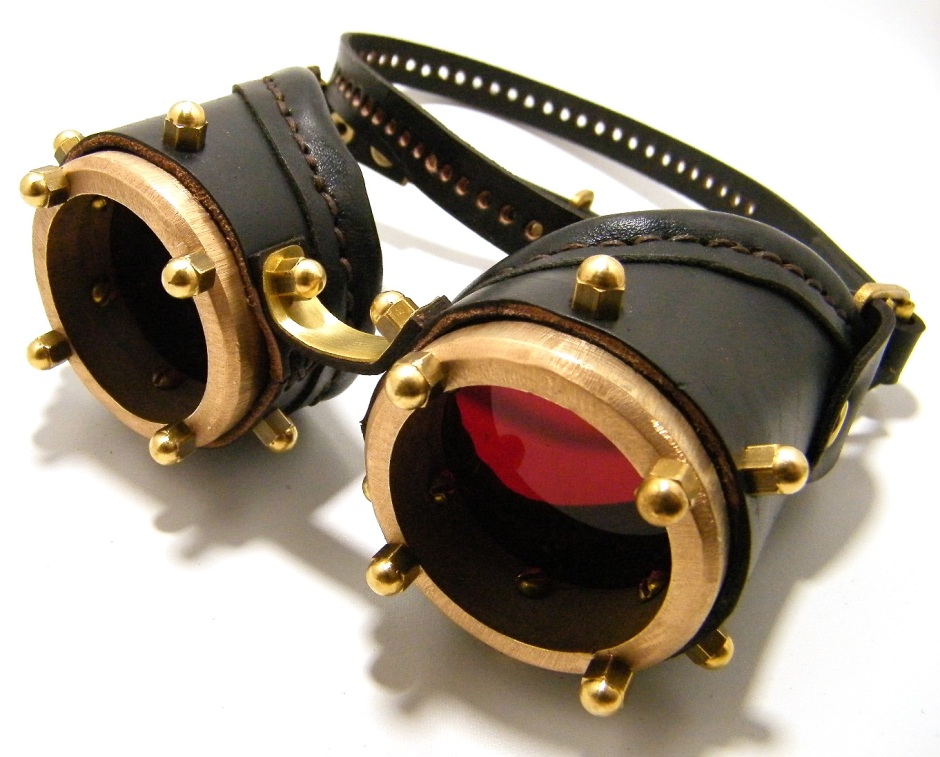
In recent years the community of steampunkers are more widespread in culture than they once were. What was once an underground movement relating to science fiction enthusiasts, is now a movement that stresses the do-it-yourself ethic. It usually takes the late 1800's era and tweaks it. Adding airships, clockwork robots, and of course the ever popular mad scientist. It has grown to a proportion where even major television shows like Castle have featured steampunk in one of their episodes, exposing the greater culture to the subculture of steampunk.
What is it about this movement that captures the hearts and minds of people?
Steampunk at its heart is retro futuristic science fiction. What I mean by that, is that it places some of the future back in a past that never was and attempts to make sense of it. The entire nature of the movement is anachronistic. Hence allowing for a wide berth of imagination. As long as the technology in question can be explained within the constraints of its setting, then it will work in the story. That being said, within steampunk the improbable is quite possible, and most often required.
The roots of steampunk stem from the broader category of Victorian Science Fiction (VSF). Much of steampunk is dependent on the improbable gadgets so common to the genre. Without gears this genre, quite possibly wouldn't exist. In VSF on the other hand the focus is on the adventure just like in other forms of pulp fiction. The typically hero in steampunk is the scientist as a hero. Its a genre where brains are valued over brawn. Victorian Science Fiction on the other hand does have a tendency for scientists as heroes, but can fit many other types of heroes into their formula.
In VSF the discovery of the unknown beyond our boarders is the main thrust of the adventure. Likewise, it can be similar in steampunk stories. Both genres owe their lineage to the works of H.G. Wells and Jules Verne as the main fathers of this genre. The submarine in 20,000 Leagues Under the Sea was a futuristic concept at the time of the books publication. There was a submersible created by Robert Fulton in 1800 named the Nautilus, with a hand cranked propeller. Which probably inspired Jules Verne's novel in 1870. At the time, the ocean was vastly unexplored and lent fertile ground for the writings of science fiction. The genre of steampunk is primarily a written one, before a costumed one. People who adhere to it generally have at least some knowledge of its literary origins, and try to match their cosplay likewise.
In today's popular culture, steampunk is epitomized by the excessive use of goggles, gears, brass, brown, and gears. The zeppelin has also become an icon of steampunk. But it should be more than just an icon to distinguish the genre. Steampunk ought to be foremost a mindset. Typically set within Victorian ideals, it then subverts those ideals and rebels against the setting, giving us the edge to the punk. The "punk" term has bothered me as a description. If another term should be used, I feel revolution is a better term. "Punk" has stuck as a term because steampunk came about as a response to cyberpunk. It is the opposite of archaic, cyber-punk is ultra-futuristic where technology invades all of society, even invading man with the aid of bionics. Steampunk I believe is the retaliation to cyberpunk. There is some punk to the movement, despite its love of the analog. The band Abney Park who some describe as "the quintessential steampunk band" had quite an edge to some of their songs, cementing them strongly into the punk of steampunk. All in all, the genre of steampunk is great fun to write and be, and can be considered fun for most. I hoped that this post helped you understand a little of how I view steampunk. So raise your tesla-colied logarithmic calculator and join the steampunk revolution.
No comments:
Post a Comment